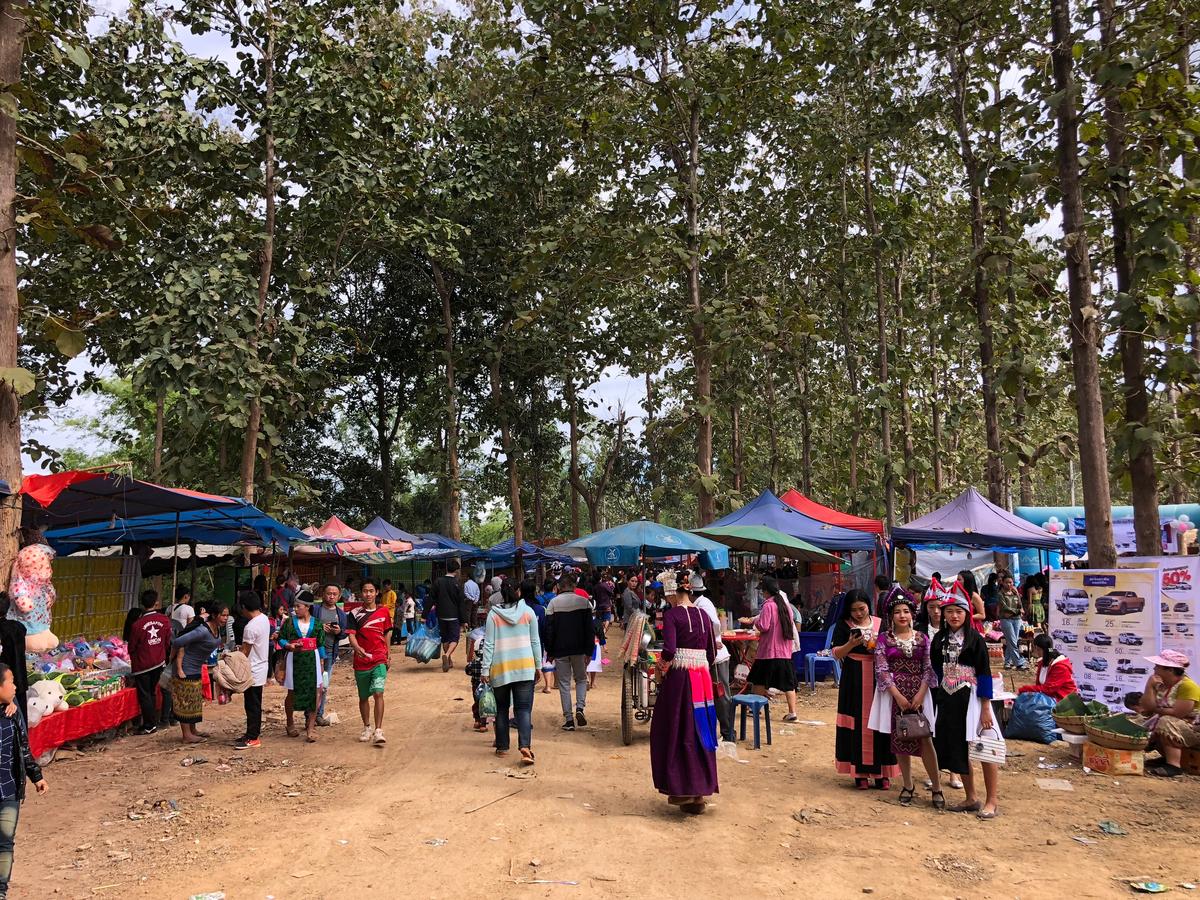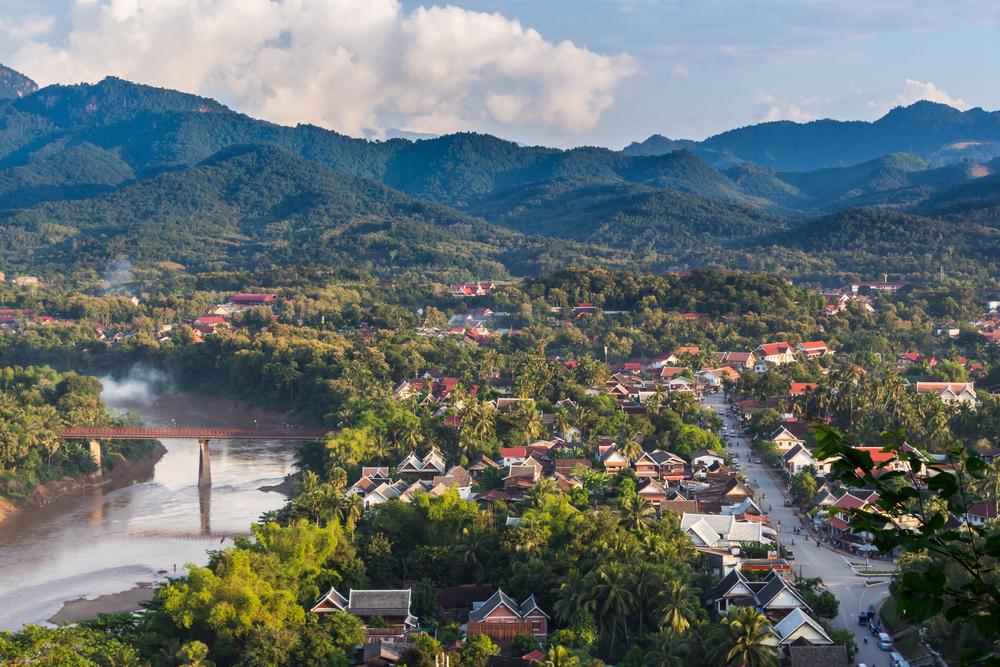The taxi driver is apologetic. “Sir, this is as close I can get,” he tells me, as I climb out more than a mile from my destination. And then, moving in the same direction as everyone else, I join the pilgrimage. The crowd thickens as I get closer. Some travel on foot, others buzz past on the backs of noisy little motorbikes. A whole extended family waves from a wagon being pulled by a tractor. The air is heavy with humidity, but light with a festive spirit, despite the fact that many have traveled long distances to be here. Small, impromptu stands sell essentials—one merchant of opportunity, his place piled high with bananas, calls out to me on a microphone, asking if I’d like a bunch.

The New Year celebration takes place just outside of the city of Luang Prabang, Laos. Tim Johnson





